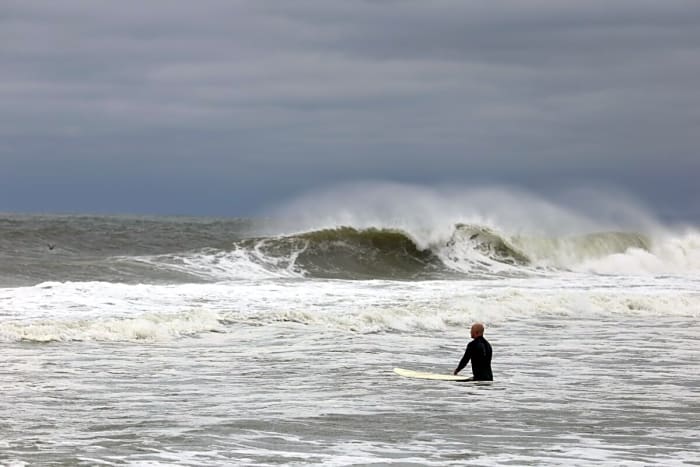
Last month, a federal court ruling reversed a 2023 ruling in favor of the “Save the Hudson” law, which banned any dumping of radioactive waste into waterways. Federal law preempts such state-level rulings, deemed US District Judge Kenneth Karas in the recent ruling, and as such, Holtec, the nuclear-power focused energy firm responsible for the decommissioning of New York State’s Indian Point nuclear power plant in Westchester County, some 35 miles north of midtown Manhattan and only a skip and a hop farther from the Big Apple’s one and only designated surfing beach, can proceed as they wish under notably laxer federal regulations.
Those regulations including permitting radioactive waste—namely tritiated water, which contains the nuclear-energy byproduct tritium, a carcinogen, among other things—to be released into the Hudson at a rate of roughly 45,000 gallons per year, with a total 1.5 million gallons of the waste water ultimately being deposited into the Hudson River in coming years.
While that 45,000 gallons a year is beneath the threshold of concern where the federal government is concerned, the general public has expressed concern as to how carefully and evenly this wastewater will be distributed, and what kind of precedent it sets going forward—not to mention the perception an already skeptical public bears of the Hudson River as the viable recreational waterway it has only just recently become, which worries nongovernmental watchdogs and nonprofit entities like Riverkeeper.
“The biggest concern that Riverkeeper and NY lawmakers have is how it will impact the public’s perception of the Hudson,” Larissa Liebmann, an attorney with Riverkeeper told me over the phone.
People have only recently begun swimming in the Hudson River, and surfers have only recently found reliably safe water levels in the surf zone surrounding the mouth of the Hudson River, which includes New York City’s Rockaway Beach as well as New Jersey beaches to the south and west.

“Holtec has a very simple means of greatly reducing the risk,” Liebmann posited. “It has a 12-year halflife. Could just store it for 12 years and radioactive levels would be halved. That would go a long way towards making the public feel safer and continue wanting to interact with the Hudson River.”
Indeed it would. And sometimes fomenting doom and gloom around a touchy subject such as nuclear wastewater isn’t necessarily the best course of action, especially when the science shows that low levels are predominantly “safe,” for whatever that’s worth. Riverkeeper isn’t suggesting the decommissioning of the Indian Point power plant be halted altogether, or that the wastewater should end up in someone else’s backyard, just that a little more time to lessen the harmful effects of the tritiated water, along with some careful public relations, could go a long, long way.
To learn more about the decommissioning of Indian Point, and to voice your concerns, visit the Department of Public Services’ Decommissioning Oversight Board’s webpage. To learn how to get involved with Riverkeeper, visit their website at Riverkeeper.org.
More must-reads:
- Former NBA champion calls for LeBron James to retire after this season
- Giants QB Jaxson Dart joins unexpected company after his first three starts
- The 'Team USA men's basketball coaches' quiz
Breaking News
Trending News
Customize Your Newsletter
 +
+
Get the latest news and rumors, customized to your favorite sports and teams. Emailed daily. Always free!








